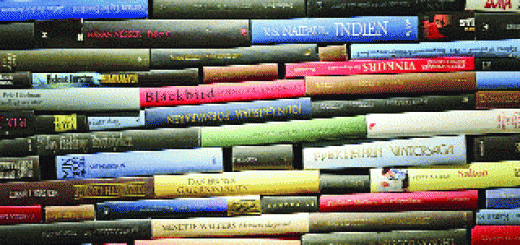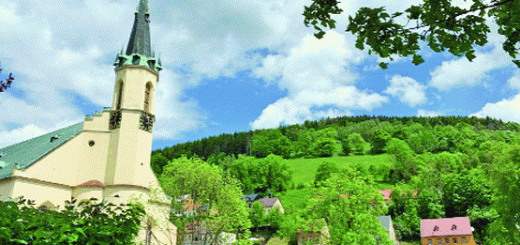From Turkey to Iceland: Celebrating Eid al-Fitr around the world
Eid al–Fitr is an important celebration for Muslims at the end of Ramadan. At the end of the fasting month, this religious occasion is celebrated in the presence of family and friends with a myriad of color and mouth–watering traditional foods. Traditionally, this “Festival of Breaking the Fast” lasts for three days and is marked by Muslim communities coming together to honor this religious occasion.
The festivities begin with morning cleansing known as “ghusl”. This is the process of washing the body to rid it of spiritual impurities. After that, Muslims put on their finest clothing. Dressing differs all around the world and, depending on likeness, what Muslims wear on Eid al–Fitr can differ in color, shape, and style. In certain countries, women also adorn their hands with intricate henna patterns to mark this holy event.
Families then head to their local mosques for their morning prayers. Before these morning prayers, Muslims are encouraged to partake in zakat al–fitr. Every adult Muslim is encouraged to donate their excess food and provide alms to those who are in need.
The festivities truly begin after morning prayers as families go about visiting their family and friends. A luxurious and delicious spread of food, snacks, and desserts are often shared amongst each other. Check out our article on unique and delectable Ramadan foods!
The process of ghusl, morning prayers, zakat al–fitr, and visiting is common practice for Muslims everywhere. Apart from these practices, unique traditions and customs are present amongst individual Muslim communities all around the world. From Turkey to Iceland, come with us to explore these differences.
Turkey
Turkish Eid al–Fitr celebrations are marked by sunny beaches! Yes, you read that right! Many Turks flock to the beach during the Eid al–Fitr holiday to take advantage of the hot weather. With Muslims making up close to 98% of the population in Turkey, many families travel to different provinces to visit relatives during the Eid al-Fitr holiday.
So where does a visit to the beach come in? Other than visiting family on the first day of the Eid al-Fitr celebrations, Muslims in Turkey also make use of the second and third day to lounge by the inviting waters of the sea. Fishing, swimming, and other fun–filled activities ensue at these sandy coasts as family and friends take advantage of the long public holiday to rest and relax.
Singapore
On the sunny island of Singapore, one of the highlights of the Eid al–Fitr celebrations is the explosion of colors lighting up the Geylang Serai area. One of Singapore’s oldest Malay settlements, Geylang Serai has been the center of Eid al–Fitr celebrations for Muslims living in Singapore. A spectacular display of lights illuminates the streets of Geylang Serai each year. We’ve heard these displays can feature over 50 different types of light and visual installations, all depicting a kaleidoscope of lively color.
Geylang Serai is also home to the annual Geylang Serai Ramadan Bazaar. Food is definitely the center of attraction at the bazaar, which features over a hundred food vendors that serve up gloriously divine traditional Malay foods. Over the last several years, vendors have also been serving Instagram–worthy foods like bubble–tea desserts and flaming marshmallows on a stick. A feast for the eyes and a treat for the belly!
Iceland
The celebration of Eid al–Fitr in Iceland is by far the most unique on this list. That said, while the community is certainly growing, Muslims still remain a minority of the Icelandic population.
Leading up to the celebration Eid al–Fitr, Muslims in Iceland also partake in the dusk–to–dawn fast during Ramadan. In the peak of summer, the sun remains up in the sky for a longer time than usual, the sun setting at midnight and returning two hours later. This means that Muslims living in Iceland are required to fast up to 22 hours a day. While this sounds like a very challenging feat, Islamic scholars and experts have offered an alternative to those who live in the land of the midnight sun. Icelandic Muslims can choose to break their fast based on the timings of sunrise and sunset from the nearest country, or observe Saudi Arabia’s timezone.
Eid al–Fitr is celebrated in one of the few mosques in Reykjavík, the capital of Iceland. Guests who visit the mosque come armed with an international buffet of mouth–watering foods, including foods from Indonesian, Egyptian and Eritrean cuisines to celebrate this holy and joyous occasion. Much to the delight of the children, the little ones wear their best clothes and exchange gifts with fellow friends and family members.
Egypt
In Egypt, Eid al–Fitr celebrations are marked by the cheerful spirit of visiting older family members after morning prayers at the mosque. Often, elders give a small token of money to the younger ones in the family.
With family get–togethers being the focus of the festivities, many Egyptians flock to public gardens and zoos to celebrate the occasion. Giza Zoo is one of the most popular locations for families, with the zoo planning ahead of Eid al-Fitr celebrations to welcome throngs of families who come to view the animals and more importantly, spend well–earned time with each other.
New Zealand
Eid al–Fitr festivities in Auckland begin with the usual rituals of morning prayers and cleansing. After that, Eden Park opens its doors to the bi–annual Eid Day, a fun–filled event filled with activities for everyone. The festival at Eden Park features all sorts of carnival fun including mechanical bulls, human foosball, and a variety of food vendors selling delectable delights from around the region.
While Eid Day is a great time for families and friends to celebrate the occasion together, it also serves as an important event for visitors from all walks of life to learn and embrace the Muslim community during this special occasion.
United Arab Emirates (UAE)
Most local Emiratis celebrate Eid by eating authentic cuisine and spending time with family, but there are other traditions that are special to the UAE. Many families hang an array of rainbow-coloured rugs and banners outside their houses, a tradition that has been passed down through the generations. Parks and arenas are also adorned with festival flags for those who do not have family but still want to celebrate this euphoric festival as a community. A tradition that has been made popular worldwide that stems from the UAE is the decoration of the hands of women and girls with henna, signifying healing and beauty, as well as celebration.
Morocco
During Eid al-Fitr, Morocco’s colourful culinary dishes take centre stage. Where other countries focus on gift giving and more commercialised celebrations, Moroccans typically hold low-key foodie affairs after morning prayers. Lamb, couscous and prunes feature in meals throughout the day, followed by traditional cookies and pastries, all enjoyed surrounded by family and friends. Food-based Eid traditions around the world don’t get better than this.
Indonesia
In Indonesia, Eid traditions revolve around family and loved ones. Worshipers leave the big cities and flood back to their family homes to celebrate Lebaran (Eid al-Fitr) with their families. As the most significant holiday in the Indonesian calendar, families go all out. Children receive coloured envelopes with money from relatives, families visit the graves of loved ones, and everyone dresses in colourful cultural clothing. Lapis legit (thousand layer cake) is a staple for Eid family gatherings and symbolises the sweet, rich layers of life. The cosy chaos of family celebrations is what makes Eid traditions in Indonesia so special.












Recent Comments